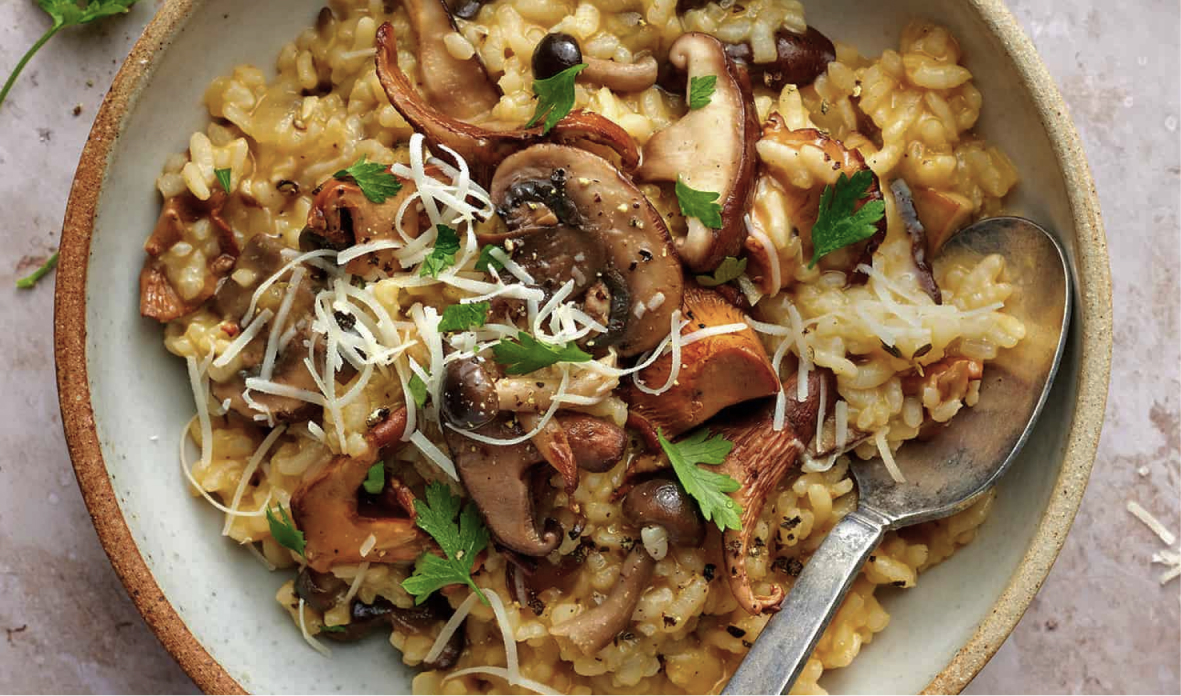Fertilizers, Land Clearing, and Cow Burps: How the Meat Industry is Affecting the Environment

According to Project Drawdown, changing our dietary habits curbs our individual climate impact the most. A recent study compared vegans and meat eaters on various parameters and found that vegans emit 75% fewer greenhouse gases compared to meat eaters.
Why do animal products have such a big impact on our dietary emissions? Before we address that, let's examine the emissions of various animal and plant-based products:
Which protein-rich foods are the worst for the environment?
According to a 2020 research conducted by Our World in Data, beef emits 25 kilograms of carbon dioxide equivalent (kgCO₂eq) per 100 grams. Lamb follows with 20 kgCO₂eq, farmed shrimp with 10 kgCO₂eq, and cheese with 8.4 kgCO₂eq.
Towards the end of this table, we find plant-based protein sources such as tofu (1.6 kgCO₂eq), beans (0.65 kgCO₂eq), peas (0.36 kgCO₂eq), and nuts (-0.8 kgCO₂eq). Yes, nuts have a negative footprint. Tree nuts actually remove more CO₂ from the atmosphere than what is emitted during their production, making them carbon negative.
In the middle, we have pork (6.5 kgCO₂eq), chicken (4.3 kgCO₂eq), eggs (3.8 kgCO₂eq), and farmed fish (3.5 kgCO₂eq) which have a lower footprint than beef and lamb.
If you consume beef, replacing some portions of it with pork, chicken, and eggs can help reduce your carbon footprint.
Getting your beef locally is not more sustainable
Even if you purchase your beef locally, it will still have higher emissions than chicken and pork. Contrary to the popular notion, transportation of food has a minuscule impact on its carbon footprint.
Another study conducted by Our World in Data shows that if you walk to your local farmer and buy beef from them instead of beef grown in a beef herd, it will reduce your emissions by only 0.35% or 0.207 kg CO₂eq per kg.
If an average household substitutes their calories from red meat and dairy with chicken, fish, or eggs just one day per week, they will save the same amount.
Why is eating meat worse for the environment?
Beef, lamb, and dairy production practices result in higher emissions. Cows and sheep are ruminant species. They can digest their food without thoroughly chewing it and as a result, they belch out methane during their digestive process.
Methane, a greenhouse gas, is around 25x more potent than CO₂ over a 100-year period. Additionally, cows require more feed than other types of meat due to their longer growth and reproduction periods.
Clearing large tracts of land for feed production for these animals leads to deforestation, responsible for 8% of greenhouse gas emissions.
The meat industry also uses nitrogen fertilizer to stimulate plant growth and improve the feed, resulting in the release of CO₂ and another greenhouse gas, nitrous oxide.
Producers need to adopt better meat production practices that can mitigate the highest impacts of production.
Making everyone shift to a plant-based diet is not practical. People in many low-income countries rely on small quantities of meat and dairy as a key source of nutrition.
As consumers in countries with more diverse food options, we can replace red meat with lower impact options such as chicken or eggs and incorporate more plant-based sources of protein such as tofu, nuts, peas, and beans.
Join the community

















